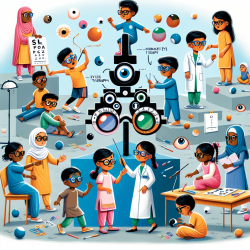In a recent comprehensive study published in the British Journal of Ophthalmology, researchers explored the prevalence of refractive errors among school-going children across multiple states in India. This study highlights a growing concern that practitioners need to address: the increasing rates of myopia and hyperopia among children, which could significantly impact their educational and social development.
Key Findings from the Study
The study conducted vision screenings on over 2.2 million children aged 5-18 years across five Indian states. The results showed that myopia prevalence increased with age: 1.57% in children aged 5-9 years, 3.13% in those aged 10-14 years, and 4.8% among those aged 15-18 years. Hyperopia was less prevalent but still notable at 0.59%, 0.54%, and 0.39% across the same age groups respectively.
Implications for Practitioners
The findings suggest several implications for practitioners working with school-aged children:
- Early Detection: Regular vision screenings should be integrated into school health programs to identify refractive errors early and provide timely interventions.
- Cultural and Environmental Factors: The study found that myopia was more prevalent in urban areas and among children attending private schools, possibly due to higher literacy rates and increased screen time. Practitioners should consider these factors when developing intervention strategies.
- Customized Interventions: Given the variation in refractive error prevalence across different states, interventions should be tailored to meet the specific needs of each region.
The Role of Online Therapy Services
TinyEYE's online therapy services can play a crucial role in addressing these challenges by providing accessible eye care solutions. Through virtual consultations and teletherapy sessions, practitioners can reach students in remote areas who might otherwise lack access to specialized care.
A Call for Further Research
This study opens the door for further research into the socio-environmental factors contributing to refractive errors among Indian children. Understanding these factors can help refine intervention strategies and improve outcomes for affected students.
Prevalence of refractive errors among school-going children in a multistate study in India
The original research paper provides detailed insights into the methodologies and findings that can guide future studies and policy-making decisions.










